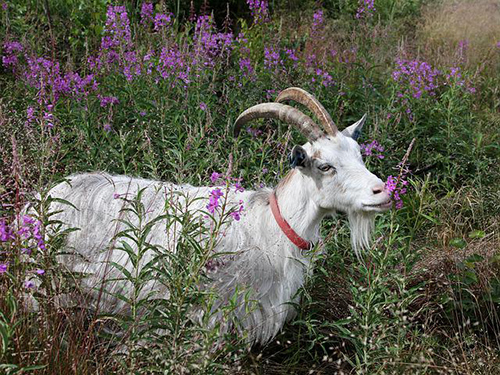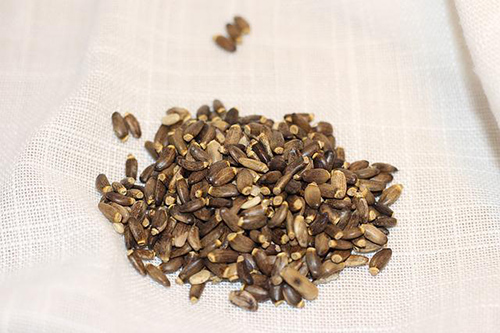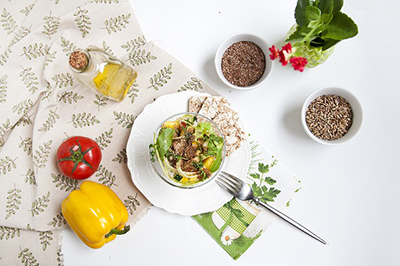Contents
The prickly thistles of this plant protect the many valuable medicinal uses of the milk thistle plant. Many people, however, dismiss these plants, thinking they are rough vegetables only fit for donkeys. Hence, this plant is named donkey thistle in many Latin countries despite its doubtless medicinal properties.
- Liver Health Support*: Bronson Milk Thistle with Dandelion Root helps to support healthy liver function.*
- Superior Quality: Laboratory tested GMO-Free, Gluten-Free and Soy-Free. Bronson products are in-house tested and carefully manufactured by trained professionals in our state-of-the-art facility that is located in Hauppauge, New York.
Indeed, donkeys eat thistles. But “intelligent” humans took many years to discover what those humble animals instinctively know. Many would be surprised to learn that a powerful substance against liver disorders is extracted from this thistle: silymarin, which is part of several pharmaceutical preparations.
According to legend, the white stains on the leaves of this thistle are drops of milk falling from the Virgin Mary’s breast when she hid her son from Herod’s persecution. On this basis, Middle Age physicians recommended milk thistle for increasing milk production in breastfeeding women.
Late scientific developments, which made it possible to know the chemical composition of many plants, allowed physicians to surrender many popular myths about plants. Hence, we can use medicinal herbs more effectively and steadily than before.

Milk Thistle Scientific Facts
- Scientific Name – Silybum marianum (L) Gaertn.
- Scientific Synonyms – Carduus marianus L.
- Other Names – Saint Mary’s thistle.
- French – Chardon Marie.
- Spanish – Cardo Mariano.
- Environment – Typical Mediterranean species also grow in dry, rocky soils in Great Britain and North America.
- Description—A plant of prickly appearance, growing up to two meters high, of the Compositae family, it has large, thorny, white-stained leaves. Its flower heads are pink or purple, and the fruits are hard and dark-colored.
- Parts of the plant used medicinally – The fruits (seeds), the leaves, and the root.
Milk Thistle Plant Uses
In the fruits of the milk thistle, there are substances with medicinal properties, the so-called flavonolignans. Dr. Coll (of the Pharmacognosis and pharmacodynamics Laboratory of Barcelona’s Pharmacy College) points out that these complex substances are formed by a flavonoid (taxifolin), and a phenolpropanic molecule (coniferilic alcohol) of flavonolignans is called silymarin.
SILYMARIN can stimulate the regeneration of hepatic cells damaged by toxic substances such as ethyl alcohol or carbon tetrachloride and phalloidine, a substance contained in the most poisonous mushrooms, Amanita phalloides. Silymarin stimulates protein synthesis in hepatic cells and has essential anti-inflammatory properties on the liver’s mesenchyme (supporting fiber tissue).
Hence, the milk thistle is highly recommended in the following cases:
- Fatty degeneration of the liver, both caused by alcohol or by other toxic substances.
- Inflammation of the liver is caused by medicines, such as those with anti-inflammatory, tuberculosatic, anovulatory, or psychological effects.
- Poisoning with hepatotoxic substances, such as carbon tetrachloride, organic-phosphoric insecticides, and mushrooms of the genus Amanita (Amanita phalloides, Amanita verna, Amanita virosa).
- Acute viral hepatitis, chronic hepatitis, alcoholic hepatitis (liver inflammation caused by alcoholic beverage consumption).
- Hepatic insufficiency or congestion, with or without jaundice.
- Hepatic cirrhosis.

In all these cases, silymarin stimulates the regeneration of damaged liver cells and restores their normal functions. However, this plant does not entirely heal cirrhosis, nor does any other treatment, up to now, if necrosis has already occurred (death or destruction of liver cells). Nonetheless, even in the most severe cases, an improvement is expected.
The FRUITS of the milk thistle, and in less proportion, its leaves and root, contain other active substances (biogenic amines, essential oil, albuminoid substances, and tannin), which could explain its balancing action on the autonomic nervous system that controls the tone of blood vessels. Therefore, the plant is successfully used in the cases of:
- Migraines and neuralgias.
- Exhaustion and asthenia (fatigue).
- Kinetosis (nausea and vomiting when traveling): drink herbal tea before departing.
- Allergic reactions: hay fever, asthma, nettle rash.

How to use Milk Thistle
- Salads: Young leaves without pickles and flower hearts (like artichokes) can be eaten raw, like Sahara Bedouins. These are exquisite meals.
- Infusion or decoction with 30 to 50 grams of mashed or ground fruits per liter of water, to which some leaves or roots can be added. Drink from three to five cups daily. The dose can be exceeded with no risk since the milk thistle has no toxic effects.
- Dry extracts: The recommended dose is 0.5-1 grams thrice daily.
DISCLAIMER: All content on this website is presented solely for educational and informational objectives. Do not rely on the information provided as a replacement for advice, diagnosis, or treatment from a qualified medical expert. If you are pregnant, nursing, or have any preexisting medical concerns, talk to your doctor before using any herbal or natural medicines.
REFERENCES
- George D. Pamplona-Roger, M.D. “Encyclopedia of Medicinal Plants.” George D. Pamplona-Roger, M.D. Encyclopedia of Medicinal Plants. Ed. Francesc X. Gelabert. Vols. 1 San Fernando de Henares: Editorial Safeliz, 2000. 395, 396. Print. [milk thistle plant uses]
- Mulrow, C., Lawrence, V., Jacobs, B., et al. (2000). Milk thistle: effects on liver disease and cirrhosis and clinical adverse effects [Summary Report]. Agency for Healthcare Research and Quality (US). https://www.ncbi.nlm.nih.gov/books/NBK11896/
- Federico, A., Dallio, M., & Loguercio, C. (2017). Silymarin/Silybin and Chronic Liver Disease: A Marriage of Many Years. Molecules (Basel, Switzerland), 22(2), 191. https://doi.org/10.3390/molecules22020191
- Abenavoli, L., Capasso, R., Milic, N., & Capasso, F. (2010). Milk thistle in liver diseases: past, present, future. Phytotherapy research, 24(10), 1423–1432. https://doi.org/10.1002/ptr.3207
- Post-White, J., Ladas, E. J., & Kelly, K. M. (2007). Advances in the use of milk thistle (Silybum marianum). Integrative cancer therapies, 6(2), 104–109. https://doi.org/10.1177/1534735407301632
- Filippopoulou, K., Papaevangelou, N., Kourtidou, E., & Chondrogianni, N. (2021). Milk Thistle Extract and Silymarin Protect against Amyloid-β Peptide-Induced Toxicity in Neuronal Cells: Implications for Alzheimer’s Disease. Oxidative Medicine and Cellular Longevity, 2021, 5565674.
- Hussain, S. A. (2021). Silymarin as an Adjunct to Glycemic Management in Patients with Type 2 Diabetes Mellitus: A Systematic Review and Meta-Analysis of Randomized Controlled Trials. Complementary and alternative medicine, 18(3), 172.
Last update on 2025-06-04 / Affiliate links / Images from Amazon Product Advertising API






